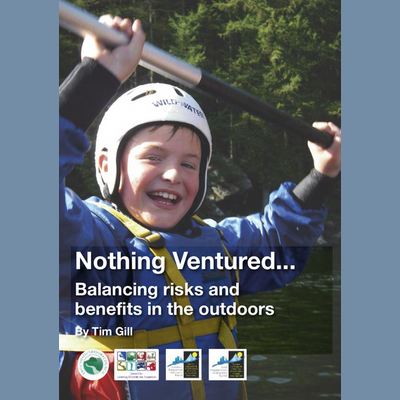Risk and Benefit in Outdoor Learning
Leaders of outdoor learning experiences have a 'duty of care' to participants which is to take ‘reasonable' care, in any sort of situation where harm might be ‘foreseen’ to occur to someone. Hazards need to be identified and assessed, safety needs to be managed and risk minimised to acceptable levels. The dynamic nature of changing conditions and needs (e.g. individuals, group, terrain, weather, equipment, animals, etc.) present a challenge for outdoor professionals who work autonomously in unknown or complex or unpredictable or wild or remote outdoor environments away from immediate help and direct line management.
Competent and adequately qualified staff, appropriate operating procedures, risk-benefit assessments, first-aid provision, emergency procedures, etc. are essential elements of a managed approach.
Some risks are more ‘risky’ than others and many of the risks associated with hazards in the outdoors are of the 'less likely' variety - otherwise our splendid safety record would be strewn with accidents - which it is not. Being able to assess the likelihood of risk and its bad consequences is a key skill for leaders
Resources
Risk Management Overview from the Outdoor Education Advisors Panel National Guidance highlights key management considerations and the following two stage risk management process:
- Identify the potential benefits to be gained from an activity, and any significant risks to the health and safety of those involved.
- Plan and implement measures to reduce these risks as low as reasonably practicable without losing the benefits, and use professional judgement to decide whether, in order to gain the benefits the remaining risks are acceptable.
Balancing Risks and Benefits in Outdoor Learning and Play by Tim Gill is a summary of the key approaches to understanding how to assess the risks and hazards, and articulate the benefits for children. It's written for those taking children outdoors anywhere in the world, with reference to some of the key evidence as to why this is the right approach.
It includes an example Risk Benefit Assessment Form. A further example Risk Benefit Assessment Form is available from Play England.
Walking for Health have a page of guidance on carrying out risk assessments of health walk routes.
The Adventure Activities Licensing Authority (AALA) came into existence in April 1996 to ensure that activity providers follow good safety management practices. The regulations (AALR, 2004) define four broad groups of activities - caving climbing, trekking [moorland or above 600m] and watersports.
Licensing only applies to those who offer activities to young people under the age of 18 years and who operate in a commercial manner. A licence is not required for:
- Voluntary associations offering activities to their members (eg scout groups, local canoe clubs etc)
- Schools and colleges offering activities only to their own pupils or students
- Activities where youngsters are each accompanied by their parent or legally appointed guardian (this does not include teacher or youth leader)
HSE guidance on managing risks and risk assessment at work includes templates to help identify what could cause injury or illness in your business (hazards); decide how likely it is that someone could be harmed and how seriously (the risk); and take action to eliminate the hazard, or if this isn’t possible, control the risk.



